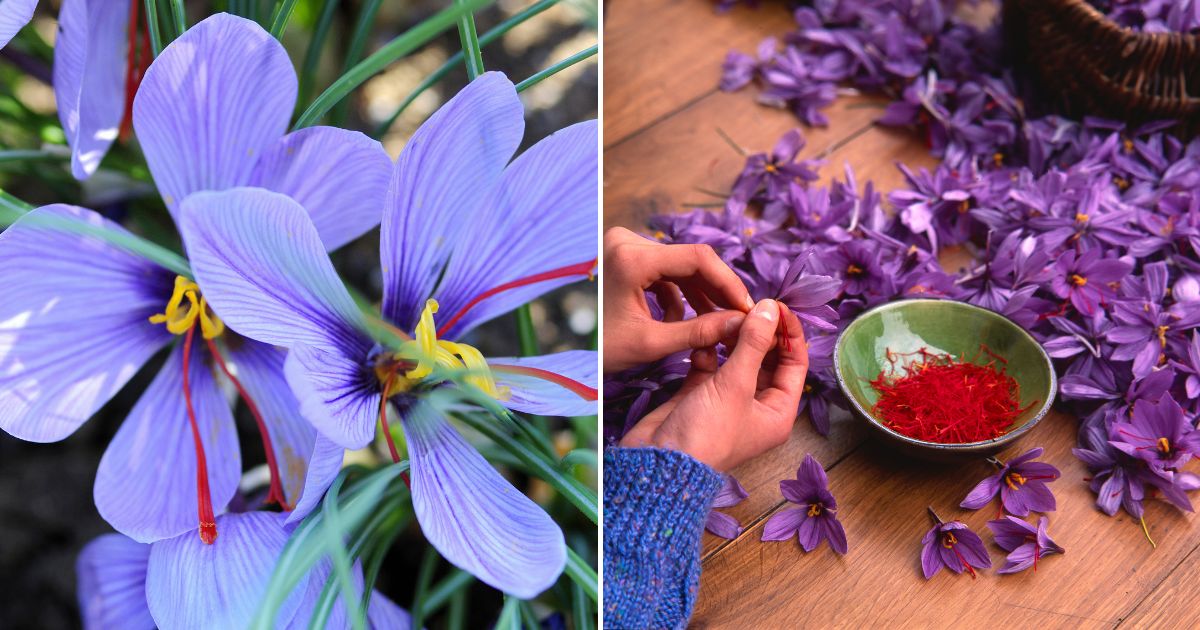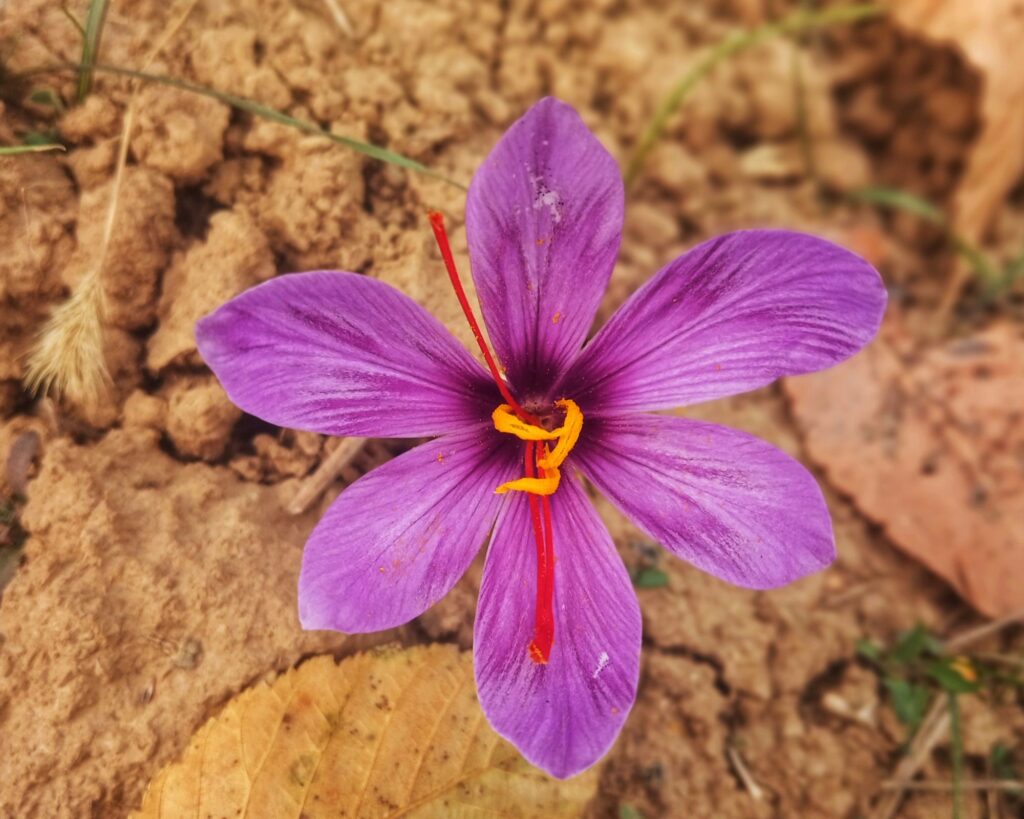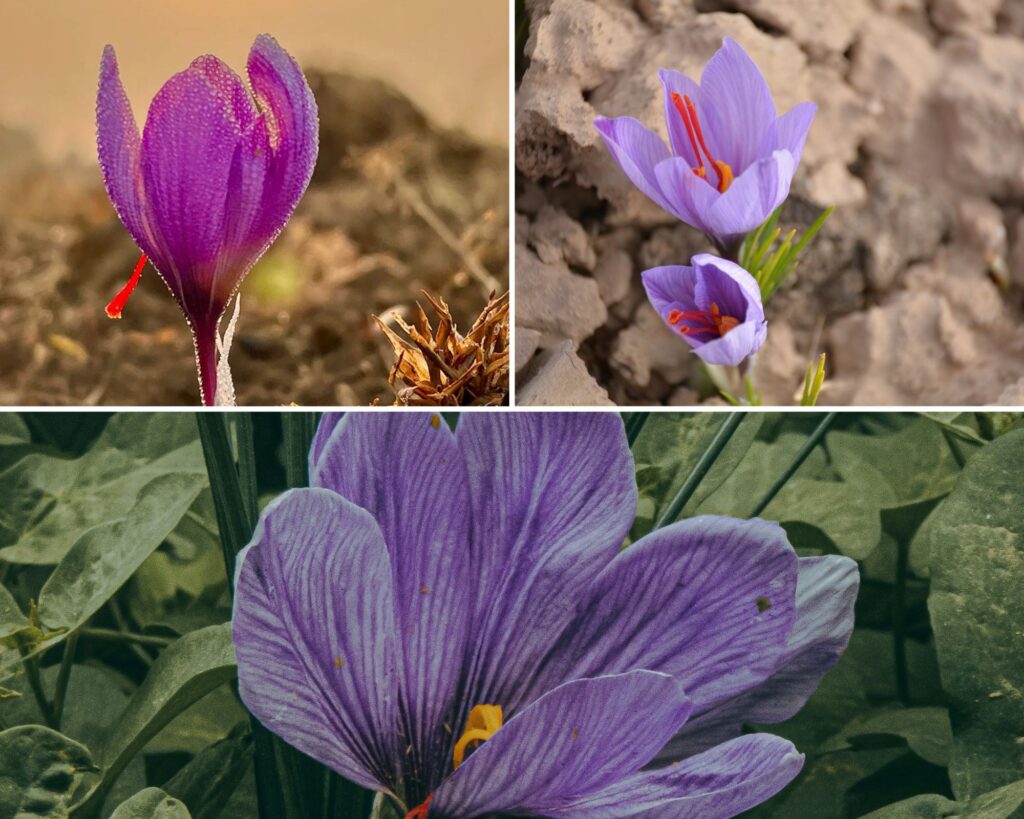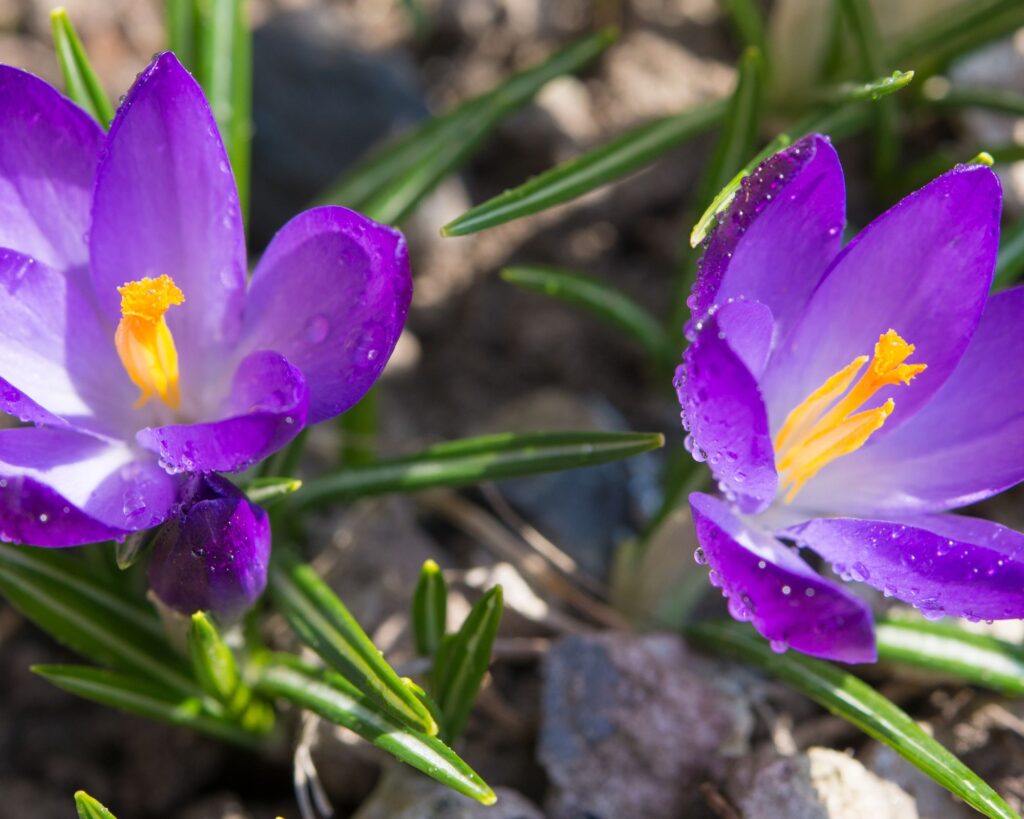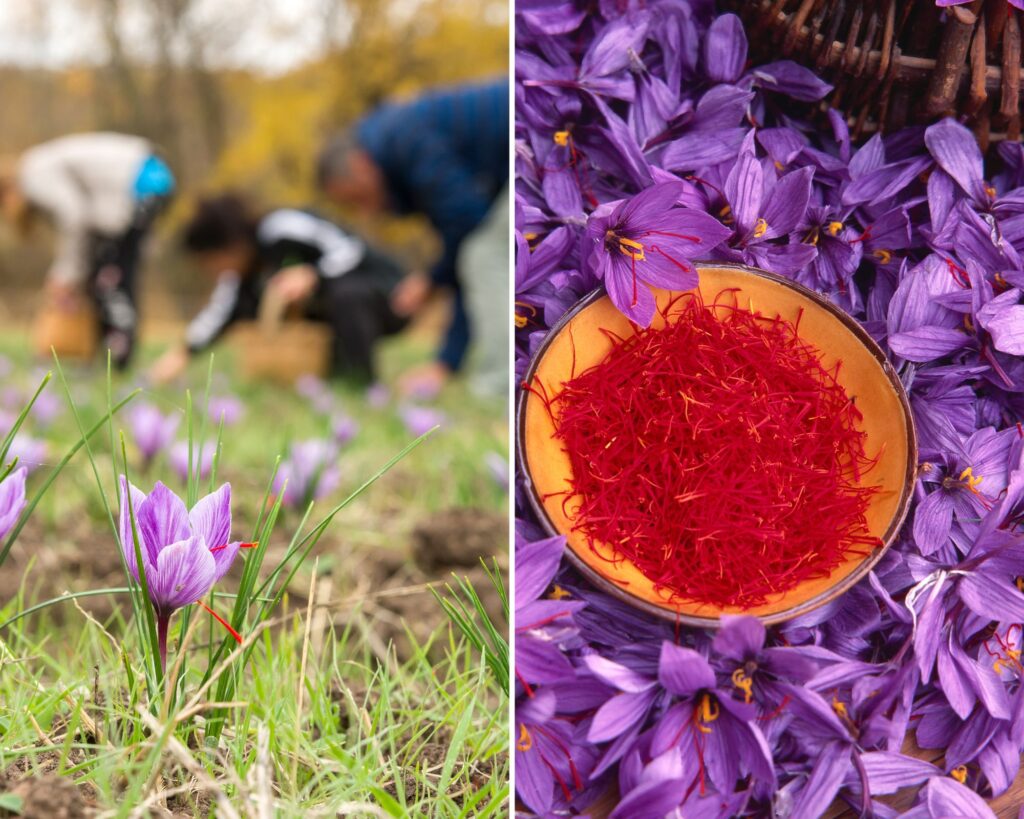Ever wondered why saffron is more expensive than gold? The good news is, you can grow this luxurious spice at home, saving money while enjoying the thrill of harvesting it yourself.
With saffron crocus bulbs, some well-draining soil, and a sunny spot, you’re on your way to cultivating this prized ingredient.
Though each flower yields just a few strands, saffron is a low-maintenance crop, and your efforts will pay off with a flavorful, aromatic harvest by autumn.
History and Value
Saffron is a unique and precious spice with a rich history and several varieties that you can consider for home cultivation.
Saffron has a storied past dating back over 3,000 years. Originating from the Middle East, it has been used in everything from cooking to medicine.
Ancient civilizations such as the Persians and Egyptians prized it highly for its vibrant color and unique flavor. During medieval times, it was even used as currency.
The value of saffron lies in its labor-intensive harvesting process. Each flower produces only three stigmas, which are then handpicked and dried. This painstaking process is what makes saffron the world’s most expensive spice, often referred to as “red gold.”
Saffron Varieties
When choosing saffron for home growth, you’ll encounter a few different varieties. The most common types are Kashmir, Iranian, and Spanish saffron.
- Kashmir Saffron: Known for its deep red color and strong aroma. It’s considered one of the best quality saffrons.
- Iranian Saffron: This variety is most prevalent and is prized for its potency and vibrant color.
- Spanish Saffron: Typically milder in flavor and color but still highly respected in culinary circles.
Understanding these varieties can help you decide which type suits your needs and growing conditions best.
Starting Your Saffron Garden
Starting a saffron garden at home requires a well-chosen location and carefully prepared soil. This section outlines the steps needed to begin this exciting and rewarding journey.
To grow saffron, select a site that receives full sunlight for at least six hours a day. South-facing slopes or areas are ideal.
Saffron thrives in well-drained soil, so avoid areas where water tends to pool. If your garden is prone to waterlogging, consider raised beds.
Ensure the location has good air circulation to reduce the risk of diseases. It’s important to choose a spot that is easily accessible for planting and harvesting. Saffron crocuses bloom in the fall, so factor in the seasonal changes in your area.
Saffron prefers sandy loam soil with a pH level between 6 and 8. Start by tilling the soil to a depth of at least 12 inches. This helps to aerate the soil and improves drainage. Adding organic matter such as compost can enhance soil fertility.
Use a soil test kit to check the pH level. If necessary, adjust the pH by adding lime to raise it or sulfur to lower it. Plant the saffron corms about 4-6 inches apart and 4 inches deep. Cover them lightly with soil and water moderately.
Corm Selection and Planting Time
Growing saffron at home starts with selecting quality corms and planting them at the right time. Proper planting techniques will ensure healthy growth and a bountiful harvest.
Choose high-quality corms from reputable suppliers. Look for plump, firm, and disease-free corms. Avoid ones that are shriveled or have visible damage. Larger corms tend to produce more flowers.
Planting should occur between late summer and early autumn. This timing allows the saffron crocus to establish roots before cold weather. Ideally, plant the corms 6-8 weeks before the first expected frost.
The Planting Process
Prepare a well-drained soil bed with a neutral to slightly alkaline pH. Dig holes about 4-6 inches deep and space the corms 4-6 inches apart. This spacing helps prevent overcrowding and promotes air circulation.
Plant the corms with the pointed end facing up and cover them lightly with soil. Water the planted area thoroughly but avoid waterlogging the soil. Overwatering can lead to rot. Ensure the soil remains moist during the growing season.
Mulching with hay or straw can help retain moisture and suppress weeds. Keep an eye on the growing crocuses to ensure they’re thriving and prepare for blooming.
Watering and Feeding
Maintaining healthy saffron plants involves proper watering, feeding, and being vigilant against pests and diseases. By giving your plants the right care, you can ensure a bountiful harvest of this prized spice.
Saffron plants thrive in well-drained soil. Watering should be moderate; too much water can cause root rot. Water the plants deeply but infrequently. Aim for once a week during the growing season, reducing frequency in the dormant period.
Feeding your saffron is essential. Use a balanced, organic fertilizer once at planting and again during the flowering stage. Avoid high-nitrogen fertilizers as they encourage leaf rather than flower growth.
Ensure the soil pH remains between 6 and 8. You can check this using a soil pH test kit from a gardening store. If needed, adjust the pH by amending the soil with lime (to raise pH) or sulfur (to lower pH).
Pests and Diseases
Saffron plants are relatively hardy, but they can still fall prey to pests like rodents and aphids. For rodents, consider using traps or barriers to protect the corms. Aphids can be managed with insecticidal soap or neem oil.
Diseases such as corm rot and fungal infections are common issues. To prevent these, ensure good soil drainage and avoid overwatering. Regularly inspect your plants for signs of disease like discolored leaves or rotting corms.
If you encounter signs of disease, remove affected plants immediately to stop the spread. Fungicides can be used sparingly, following the manufacturer’s instructions strictly.
Keeping an eye on your saffron plants ensures a healthy, productive crop.
Harvesting the Stigmas
Timing and technique are crucial for successfully harvesting and storing saffron. By carefully managing these processes, you can ensure the highest quality for your home-grown spice.
Harvest saffron early in the morning, just as the flowers start to bloom. This helps in obtaining fresh and vibrant stigmas. Use tweezers or small scissors to gently pluck the red stigmas from the center of the flower.
Place the harvested stigmas on a clean paper towel to keep them dry. Be careful to avoid any dirt or moisture, as this can affect the quality. Handle each stigma delicately to prevent damage.
Drying and Storage Techniques
Drying saffron properly is essential for preserving its aroma and potency. Spread the stigmas thinly on a paper towel, and place them in a warm, dry area away from direct sunlight. Allow them to dry for several days.
Once dried, store the saffron in an airtight container. Glass jars or hermetic bags work well. Keep the container in a cool, dark place. Proper storage can maintain saffron’s quality for up to 2 years.
Remember, light and moisture are the enemies, so ensure the storage area is optimal.
